- Home
- Edmund White
City Boy
City Boy Read online
City Boy
My Life in New York
During the 1960s and 1970s
Edmund White
Contents
Chapter 1
Chapter 2
Chapter 3
Chapter 4
Chapter 5
Chapter 6
Chapter 7
Chapter 8
Chapter 9
Chapter 10
Chapter 11
Chapter 12
Chapter 13
Chapter 14
Chapter 15
Chapter 16
Chapter 17
Chapter 18
Acknowledgments
Q&A with Edmund White
Praise for City Boy
Chapter 1
In the 1970s in New York everyone slept till noon.
It was a grungy, dangerous, bankrupt city without normal services most of the time. The garbage piled up and stank during long strikes of the sanitation workers. A major blackout led to days and days of looting. We gay guys wore whistles around our necks so we could summon help from other gay men when we were attacked on the streets by gangs living in the projects between Greenwich Village and the West Side leather bars.
The upside was that the city was inexpensive, and Manhattan, especially the part of it below Fourteenth Street, was full of young actors-singers-dancers-waiters who made enough money working their restaurant shifts three nights a week to pay for their acting lessons and their cheap rents. Unlike our hometowns back in the Midwest, where the sidewalk was rolled up at six P.M., the delis and coffee shops were open all night and the bars till four in the morning. That whole army of actor-waiters saw their restaurant jobs as just another opportunity for “scene study” (“Who am I tonight? An Austrian aristocrat who’s fallen on bad times? A runaway from an incestuous family in the Tennessee Hills? A Swedish gymnast?”). No matter how big their tips were, they managed to drink them away in a bar after the restaurants closed as they talked excitedly about their art and their loves. Everyone smoked all the time, and when you French-kissed someone, it was like rubbing one ashtray against another.
New York seemed either frightening or risible to the rest of the nation. To us, however, it represented the only free port on the entire continent. Only in New York could we walk hand in hand with a member of the same sex. Only in New York could we ignore a rat galloping across our path and head out for a midnight play reading. Artists on the Lower East Side were recycling the most primitive and worthless materials—junk, really.
But there was also a mandarin New York, a place where painters and choreographers and novelists and poets strove to produce serious art of the highest order. This was an elite group of people, scattered throughout the Village and the emerging neighborhood of Chelsea and the comfortable, kicked-out Upper West Side; in this mandarinate artists and intellectuals still felt connected to the supreme artists of the past, still thought that their work would be the latest installment in a quasi-divine legacy.
I had constant daydreams of meeting Susan Sontag and Paul Goodman. I don’t know why I focused on them—maybe because they were so often mentioned in the Village Voice and the Partisan Review but even by Time. He’d written Growing Up Absurd, the bible of the sixties, now largely forgotten (I never read it in any event). How could I have worshipped a man whose work I didn’t know? I guess because I’d heard that he was bisexual, that he was a brilliant therapist, and that he was somehow for the young and the liberated. I read his astonishing journal, Five Years, published in 1966, a groundbreaking book in which he openly discussed paying men for sex and enjoying anonymous sex in the meatpacking district. Today that would seem unremarkable, perhaps, but for a husband and a father back then to be so confiding, so shameless, was unprecedented, especially since the sex passages were mixed in with remarks on culture and poetry and a hundred other subjects.
Sontag was someone I read more faithfully, especially Against Interpretation and even individual essays as they were published.
New York, in short, in the seventies was a junkyard with serious artistic aspirations. I remember that one of our friends, the poet Brad Gooch, wanted to introduce us to his lover, who’d become an up-and-coming Hollywood director, but Brad begged him not to tell us that he worked as a director since Hollywood had such low prestige among us. That sort of reticence would be unthinkable today in a New York that has become enslaved by wealth and glitz, but back then people still embraced Ezra Pound’s motto, “Beauty is difficult.”
We kept asking in 1972 and 1973 when the seventies were going to begin…
Then again we had to admit the sixties hadn’t really begun until the Beatles came over to the States in 1964, but after that the decade took on a real, definite personality—protest movements, long hair, love, drugs, a euphoria that turned sour only toward the end of 1969. Of course for Leftists the decade began with the Brown v. Board of Education decision and ended with Nixon’s resignation in 1974.
I suppose people hadn’t really thought each decade should have its own character and be different from the others till the 1920s, although I remember in a nineteenth-century Russian novel someone remarked that a character was a typical man of the 1830s—progressive and an atheist. But at that time it seemed more a question of generations—one belonged to the generation of “superfluous men,” for instance, or one was a frivolous, self-indulgent product of the Belle Époque. But certainly in the 1920s, as the idea of the modern became current, every amateur sociologist began to seek out the personality of the dawning decade.
In retrospect we could see that the 1950s had been a reactionary period in America of Eisenhower blandness, of virulent anticommunism, of the Feminine Mystique. I lived through the fifties in the Midwest when everything that was happening—the repression of homosexuality, for instance, the demonization of the Left, the giggly, soporific ordinariness of adolescence, the stone deafness to the social injustice all around us—seemed not only unobjectionable but also nonexistent. Somehow we’d all been led to think that the order of things in the fifties was “natural,” eternal and unchanging. The cult books of that epoch were The Lonely Crowd and The Man in the Gray Flannel Suit.
The great triumph of the sixties was to dramatize just how arbitrary and constructed the seeming normality of the fifties had been. We rose up from our maple-wood twin beds and fell onto the great squishy, heated water bed of the sixties.
At the end of the 1970s I wrote, “There was no style for the decade, no flair, no slogans. The mistake we made was that we were all looking for something as startling as the Beatles, acid, Pop Art, hippies and radical politics. What actually set in was a painful and unexpected working out of the terms the Sixties had so blithely tossed off.”
Chapter 2
I had majored in Chinese at the University of Michigan and I’d been accepted at Harvard to do a Ph.D. in the language. But then I’d pursued a boy I was in love with, Stan, to New York instead. Stan was a junior but had been lured to New York with dreams of becoming an actor. I arrived on July 19, 1962.
I wasn’t really suited for any kind of work except journalism. I’d edited the campus literary magazine at the University of Michigan and thought that somehow I could turn that experience into a job. I had no connections in New York. I had no money beyond the two hundred dollars I’d earned during the month of June delivering eggs and fruit juice in Des Plaines, a desolate suburb of Chicago. On July 19, Stan’s birthday, I decided I had to fly to New York to join him. My sister and mother always later claimed that I’d flown to New York first-class, but that was just more family mythmaking.
I stayed at the Sixty-third Street YMCA, which in those days was pretty much a fairy palace, full of transient and permanent gay residents. It was (and is) a mock-Moorish fantasy of tile w
ork and low ceilings, as well as a giant swimming pool where Tennessee Williams was often sighted. The residential floors were really like a giant sauna. Every time I’d emerge from my room to take a shower, even if it was at two A.M. on a stifling night, a grizzled, potbellied resident would come hobbling out and be standing within seconds under the adjoining spray, soaping himself up and staring at me fixedly, as if the secret to success in cruising were simply transmitting a strong enough signal, the more blatant the better.
Stan wasn’t especially happy to see me. The night I arrived, his birthday, I sat on his doorstep till dawn but he never came home. The next night he met me, but somewhat reluctantly. He was living with two other actors, one of them a hot older man of thirty named Paul Giovanni, who was playing The Boy in the original production of The Fantasticks, which became the longest-running musical in off-Broadway history. Stan was besotted with the cool, ironic Paul, but he did let me take him out to a gay restaurant. Of course I knew about gay bars, but the idea that gays might want to socialize and feed with one another—and in public!—seemed a fascinating new possibility. Gay liberation would not take off until 1969, but when it did, it seemed to be the final piece to a puzzle that we’d all been toying with for five or six years and slowly assembling. Maybe because visible gays were becoming more and more numerous, we were finally reaching a critical density.
Throngs of gay men were in the streets of the West Village (and a few women were visible at bars such as Kookie’s and later the Duchess on Sheridan Square). The unisex look of the sixties, though it didn’t represent a serious change in attitudes, nevertheless made it easier to sneak in a dangling bracelet on a man’s wrist or a big turquoise brooch on a striped red velvet vest (it wasn’t an era known for its good taste). During the fifties it had been illegal in many communities for a woman to wear more than two items of male clothing—jeans, sweatshirt, and a cowboy belt could get a woman arrested; now they could wear T-shirts or boots if they wanted. Though interracial marriage was still illegal in many states, the Village was full of mixed couples (mostly “Negro” men, as we said then, and white “chicks”). Even the idea of a hippie counterculture—of a counter-anything—gave us an exciting new model of contemporary dissonance.
Two months later, in September 1962, Stan agreed to live with me in the little, dingy apartment I’d rented on MacDougal Street, and we stayed together for the next five years. He’d overstayed his welcome with Paul, but he’d decided not to go back to Michigan for his senior year. He wanted to try his luck as an actor. In that era, before there was any degree of widespread gay self-acceptance, it was extremely rare to find a gay couple who lived together openly as lovers, who’d acknowledged their homosexuality to their parents and friends and colleagues, who had a sense that they constituted a real romantic pair capable of being faithful to one another or if not sexually exclusive at least committed in some sense for the long haul.
I knew just three gay couples, all former students from the University of Michigan who’d moved to the big city and were trying on for size the novel experiment of living as a gay pair. I didn’t know—or even know of—any older gay couples. Stan and I took our “affair” so lightly that we had no idea of fidelity, though we didn’t discuss the rules of our relationship. We had no idea of growing old together. We never spoke to outsiders of our “partner” (the term didn’t exist then). Another gay friend might ask, “Are you and Stan lovers?” to which I’d respond, “Sort of.” It was all pretty murky, even to us. We seldom had sex with each other—and often it happened in the middle of the night, one of us wordlessly awakening the other out of need. Because we were gay, we routinely referred to ourselves as “sick,” which was only half a joke. We both saw shrinks, off and on.
Even our infidelities were comical. Tom Eyen, a young but already well-known playwright, picked me up one night (eventually Tom wrote Dreamgirls). After we had sex, he said, “You have the same carry-on in bed as this other guy I fucked yesterday—Stan. His name was Stan.” I couldn’t wait to get home to tease Stanley, and I wondered privately what our shared “carry-on” might consist of.
Of course we were still so young that our parents and fellow workers might think we were just roommates. Lots of people our age had roommates, in fact most of them, though it wasn’t that way elsewhere. (When I later moved to Rome in 1970, the only translation for roommate was il ragazzo con cui divido l’appartamento). Most of our gay friends were careful to maintain separate bedrooms, although Stan and I slept on a foldout couch that made into a double bed. We didn’t have many visitors, though Stan would sometimes rehearse in our tiny living room with other actors from his class. If anyone asked, he said he slept on the single bed in the spare room.
We eventually discovered that we weren’t really compatible sexually. But I truly loved Stan. At first because he was so beautiful and I was an idolator of beauty. I didn’t like the way I looked and I was proud to be seen with him. Nor was my admiration of his looks a subjective thing; his beauty was classic and “famous,” or at least generally acknowledged. Two straight male friends of his fell for him; for both he was their only gay experiment. Once one of the best-known dress designers in America stopped Stan on the street and offered to take him to Egypt on a holiday. The man wanted to hand him a plane ticket on the spot. He and Stan hadn’t exchanged a word; for the designer it was “impulse buying.”
But I loved Stan not just as a trophy but because I really cared for him. He was studious and hardworking. At first when he wanted to be an actor, he took acting classes at the Herbert Berghof studio. Then he went back to school and got a master’s degree in English. He enrolled in a course in Henry James from the great James biographer Leon Edel. I paid the rent and I enjoyed having this slight hold over Stan. He needed me, at least for shelter. Of course he was also attached to me but was terribly moody and given to deep depressions.
I had found my first job at Time-Life Books on the thirty-second floor of the Time-Life Building on Sixth Avenue and Fiftieth Street. Every day I’d put on a coat and tie and head uptown from our Village apartment, usually in a taxi I could ill afford. Officially we worked from ten to six but I could never get in until eleven and I kept expecting to be reprimanded or even fired, but nothing ever happened. In fact we had little work, and a whole week’s worth could be dashed off during a panicky Friday afternoon. Our weekly assignment might be to write four picture captions of two lines each, a trivial workload that seemed momentous only because we had so much time to think about it. The editors above us always demanded rewrites since they, too, were underemployed.
I spent the whole day wasting time. A two-hour lunch. Endless coffee breaks with other writers and researchers. A weird man who came by to shine our shoes once told me that for two hundred dollars he could have anyone I wanted bumped off. At noon I’d pay a visit to an art gallery on Fifty-seventh Street or to the Museum of Modern Art around the corner. In those years I saw the first Pop Art works at the Sidney Janis Gallery—a ghostly life-size plaster man by George Segal standing on a ladder changing the letters on a movie marquee, or Roy Lichtenstein’s benday-dot comic-strip panels (“Oh, Brad”). Or I’d go to the Gotham Book Mart down on Forty-seventh, where I’d slump to the floor and read the books that were too expensive for me to buy.
The Gotham was the ideal bookstore with dozens of literary magazines stacked on the counter up close to the front door beside the cash register and, halfway back on the right, a big table full of the newest books of poetry. On the walls were pictures of all the greats who’d read at the Gotham, including Marianne Moore and Cocteau and Dylan Thomas, some of them perched high up on a library ladder, posing above the elegant Frances Steloff (who died at 101 in 1989). Although she sold the “shop,” as she called it, to Andreas Brown in 1967, she was always prowling around, sometimes urging customers to buy. She liked Oriental religions in a slightly creepy “period” way that went along with table-tapping and ectoplasmic photos, and an extensive section on Krishnamurti and the B
hagavad Gita was in an alcove just beyond the poetry table. Steloff, from a poor family, was self-educated. On her own, she’d turned the Gotham into a major intellectual center. I’m sure plenty of famous writers were lurking about during the hours and hours I spent there, but I didn’t recognize them. Of course when you’re an uninitiated kid, you’re not likely to recognize literary celebrities on the hoof. You’re like the Yale undergrad who (according to an anecdote of the period) saw Auden aboard the club car of the train to New Haven and passed him a note via the waiter asking, “Are you Robert Frost?” Auden wrote back, “You’ve spoiled Mother’s day.”
The Gotham was one of the great bookstores of my life. At the very rear of the store was a huge fiction department, where I would dip into dozens of books. It was there that I bought Robert Stone’s Hall of Mirrors and Joyce Carol Oates’s them and Pynchon’s V., though of all my Gotham finds my favorite was Hugh Kenner’s The Pound Era. The store was an oasis from the philistine world all around it. To be sure, there were other great bookstores in those days, especially the Eighth Street down in the Village, with its many floors and its sullen, unhelpful clerks. By the end of the 1970s there was the Three Lives bookstore, then on Sheridan Square.
I remember one afternoon as I browsed at the back of the Gotham hearing Andy Brown talking on the phone with someone I figured out must be a rather desperate Jack Kerouac, who wanted to sell an old manuscript to finance his move to Florida with his mother (Kerouac died in 1969 in St. Petersburg). I didn’t really hear what sort of deal they struck, if any, but I suppose what was most exciting was the idea that literature was still alive, that it was going on all around me, and that some of the legendary figures I’d read about (and even read) were still alive and struggling. Kerouac, for instance, was a sad drunk, which a later biography corroborated but which Andy’s patient tone already half suggested, talking to Kerouac as if he were a child incapable of understanding.

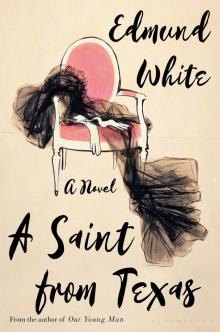 A Saint from Texas
A Saint from Texas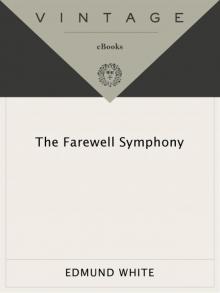 The Farewell Symphony
The Farewell Symphony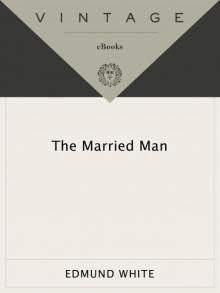 The Married Man
The Married Man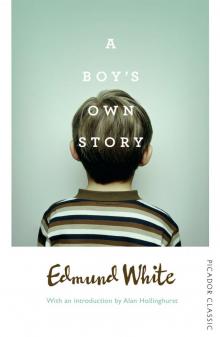 A Boy's Own Story
A Boy's Own Story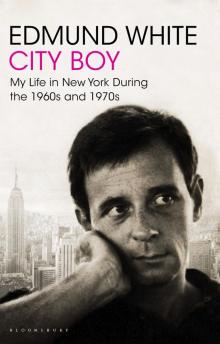 City Boy
City Boy Inside a Pearl
Inside a Pearl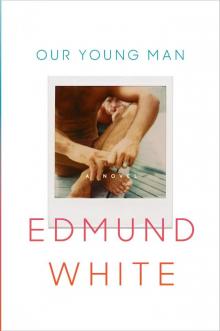 Our Young Man
Our Young Man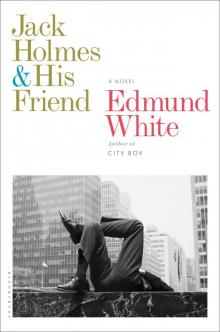 Jack Holmes and His Friend
Jack Holmes and His Friend